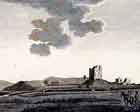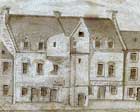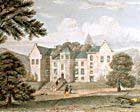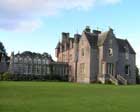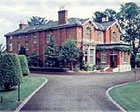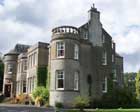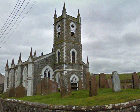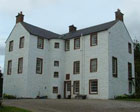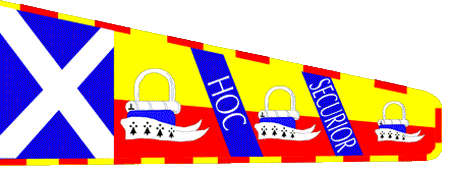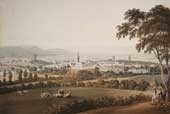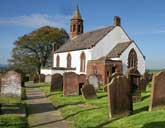 |
||
 |
||
Grierson ClanHoc Securior |
||||||
|
Clan Grierson information
|
||||||
 |
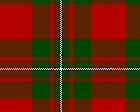 |
 |
||||
|
Clan crest badge |
Lag Castle 1700 |
Grierson tartan |
Clan Location |
|||
|
Lag Castle |
Turnpike |
Barjarg Castle 1830 |
Capenoch House |
|||
|
Redbank |
Dalgoner |
old Dunscore Kirk |
Rockhall House |
|||
Clan HistoryThe Grierson name started appearing around the late 14th early 15th century. Assumed meaning son of Grier and could be derived from Gregory. There are associations with the Clan MacGregor and some believe they derived from the same line. It is believed by some that a Gilbrid MacGregor moved down from Loch Lomond and took up lands at Dalgarnock, which adjoins Lag. However DNA results seem to refute this. The borders areas positioned between Scotland and England were strategically important to the countries defence. They provided an early warning of invasion and also slowed down invaders advance, buying time for mobilisation and deployment of the main army. The areas were divided up into three main areas or marches as they were called. In 1408 it is recorded that a family group - clan - be given land at the area of Lag about seven miles from Dumfries. Part of the deal at that time would be an agreement that the clan build defences and collectively defend the area on behalf of the realm. Lag Castle is said to have been started in 1460 by Vedast Grierson, elder son of Gilbert, although there was note of a tower and fortification at that site in 1444 so may have been an expansion and update. In 1473 Vedast was granted a Royal Charter by King James 3rd which confirmed his properties and position in the area. Sir Robert Grierson M.P. was the first Baronet of Clan Grierson and the 13th recorded chief of the line. He was knighted in 1685 as reward for services as Steward of Kirkudbright. He is remembered for his suppression of the people of Galloway and his ruthless persecution of the Covenanters in an effort to stamp out the popular rebellion against Papism and the Roman Catholic Church, which was at that time also used to support and confirm the absolute power of the Reigning Monarchs, is well documented in Scottish history. Doctor T. B. Grierson started a museum in Dumfries which opened to the public in 1872. The popular building eventually fell into disrepair and the many items he collected were later distributed to local museums around the area. One museum to benefit has an exhibition entitled "The Covenanting Wars - the killing time" which has on show items from Lag Castle and letters from Rabbie Burns and Sir Walter Scott who were both friends of the Grierson family. Turnpike was the Lag's townhouse in Dumfries. After Sir Robert expired in 1733 his widow, the Lady Henrietta Douglas who was a sister of William 1st Duke of Queensbury, stayed on at the house until her death in 1739. The family house was pulled down in the 1820's as part of the town's expansion. Sir Walter Scott based his book Red Gauntlet on the character of Sir Robert. Barjarg Tower was bought from the Earl of Morton in 1587 by Thomas Grierson. Located in the old parish of Kier in Nithsdale which was in the western march 12 miles from Dumfries. Passed on through marriage to the Erskines from Alva around 1760 and was sold on to Rev. Andrew Hunter, minister of the new church at Dumfries in 1772. Rockhall is another with Grierson Clan associations. It was originally the possession of the Kirkpatricks of Closeburn, but through a marriage union with Isabel Kirkpatrick came into the possession of a nobleman Gilbert Grierson in 1412. It was described as a mansion house before 1500 and in Lag Charter no. 171, dated 1st May, 1610 - the charter by Sir William Greirsoun of Lag, in consideration of the "luiff and affection quhik of dewtie, I beir to my lovit spouse, Dame Nicolace Maxwell, and calling to remembrance the cair and trubel taen be hir upoun my directioun in the edifeing and bigging of the place of Rockell laitlie constructit be me and in all utheris my honorabill affairis, according to the dewtie of ane loveing wyiff," granting the said Dame Nicolas the mansion and mains of Rockell in liferent. At Rockell. Witnesses: Gilbert Greirsoun, called of Dalskairth, Gilbert Greirsoun, named of Bardannoch, John Greirsoun, younger, in Wodheid, Gilbert Greirsoun, tailor, servant to the said Sir William, & Herbert Cunynghame, notary. It was the main residence of the Baronets of Lag and Rockhall. Capenoch House is 10 miles north of Dumfries the ownership passed through many Grierson hands over a 250 years span which ended in 1717. It was rebuilt in the baronial style in 1848 by the Gladstone family who now still own it. Redbank House is currently for sale at a mere £900,000. Located two miles from Dumfries. Dalgoner Sir William Grierson seems to have established the line at Dalgoner as a cadet branch. He left the estate to one of his sons, James, in his will when he died in 1629. The castle / house was built originally before 1600 and was to stay in the family until 1868 when it was sold to the Crawford family. Who still own it today. Dunscore Kirk is about one and a half miles from Lag Castle and as such has seen quite a few Griersons on their way down under. Old Lag himself was buried here in the last day of 1733.
|
||||||
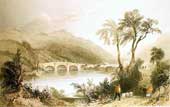
The Auld Garth Bridge over the river Nith, 3 miles from Lag, painted in 1840.
The father of Thomas Carlyle, a stone-mason, helped to build the bridge. Nearby is Dalswinton Loch where a steamship was tried out in 1788. Robert Burns farmed close by at Ellisland.
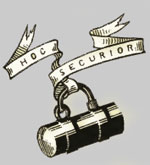
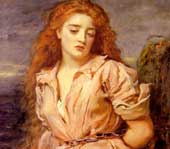
The Martyr of Solway
A poignant painting of Margaret Wilson, who refused to recognise the established Church of Scotland. The painting shows her chained to rocks on the Solway Firth where she and a friend were condemned to death by drowning in 1685.
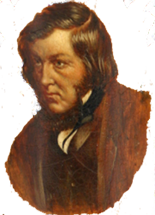
Doctor Grierson

